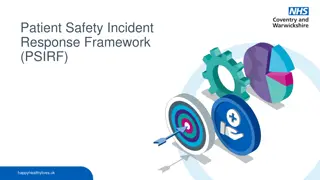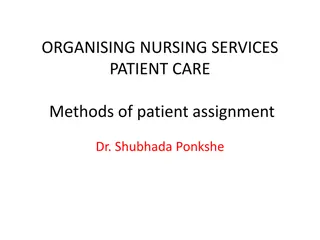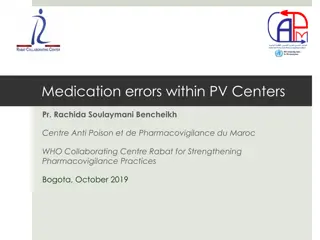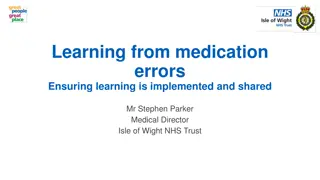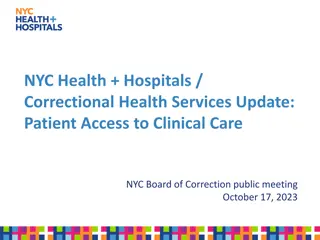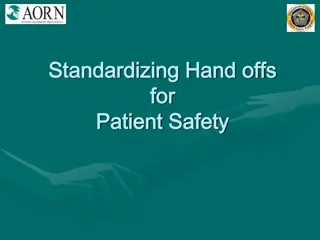Learning from Errors for Patient Safety
This curriculum guide delves into the nature of errors in healthcare, emphasizing how providers can leverage mistakes to enhance patient safety. It covers various error types, knowledge requirements, performance guidelines, and human factors principles. The guide also underlines the importance of understanding errors and their impact on patient outcomes. By exploring definitions, violations, and outcomes, healthcare professionals can cultivate a proactive approach to error prevention.
Download Presentation

Please find below an Image/Link to download the presentation.
The content on the website is provided AS IS for your information and personal use only. It may not be sold, licensed, or shared on other websites without obtaining consent from the author. Download presentation by click this link. If you encounter any issues during the download, it is possible that the publisher has removed the file from their server.
E N D
Presentation Transcript
Human Factors SAMI course
Contents What are human factors? What s your personal experience? The Bromiley incident What can you do about it?
What are human factors? The interrelationship between - The humans (communication, teamwork and organisation culture) - The tools and equipment they use in the workplace - The environment in which they work* The aim is to reduce mistakes *Kohn LT, Corrigan JM, Donaldson MS, eds. To err is human building a safer health system. Washington, DC, Committee on Quality of health Care in America, Institute of Medicine, National Academy Press, 1999.
What are human factors? The two most important individual factors on performance are stress and fatigue. Others include - Mental workload - Distractions - Physical demands - Teamwork - Process design - Device/product design - The physical environment
Whats your personal experience?
What were the human factors involved?
BromileyVideo https://vimeo.com/50029603
What human factors contributed to this sequence of events?
What human factors contributed to this sequence of events? - Loss of situational awareness - The stress of the situation meant the consultants became highly focused on intubation loosing sight of the bigger picture (the length of time and lack of oxygenation) The tunnel vision meant they had no sense of time passing or the severity of the situation - Perception and cognition - Actions were not in line with the emergency protocol. In the pressure of the moment many options were considered but they were not necessarily the best ones in hindsight. - Teamwork - There was no clear leader. This led to a breakdown in the decision making process and communication between the three consultants - Culture - Nurses who sensed the urgency early on brought the emergency kit to the room, and then alerted ICU. They stated that these were available but did not raise their concerns when these were not utilised. Other nurses who realised the seriousness of the situation did not know how to broach the subject. The hierarchy of the team made assertiveness difficult despite the severity of the situation.
Why is airway management in ICU a challenge?
How can you improve patient safety on your unit? Expertise, competence and hard work do not always safeguard against errors and omissions that result in harm We all make mistakes regardless of our experience, technical ability or seniority.
How can you improve patient safety on your unit? Organisational - Developing a positive safety culture - Embedding human factors training in health care Departmental/ personal - Mental workload - Distractions - Physical demands - Teamwork - Process design - Device/product design - The physical environment
How can you improve patient safety on your unit? - Mental workload - Be self aware - Training - Avoid reliance on memory alone - Be aware of seeing what you want to see - Distractions - Physical demands - Teamwork - Briefing and debriefing - Process design - Simplify the process as much as possible - Device/product design - Standardise the equipment used - Train staff in the equipment used - The physical environment - Is the environment organised, simplified and standardised
Summary Human factors are all the factors that influence people and their behaviour All people make mistakes, the problem is in our work one could have catastrophic consequences. An awareness of human factors is crucial to improve patient safety
References The How to Guide for Implementing Human Factors in Healthcare. Patient Safety First. Version 1 2009 05 20. www.patientsafetyfirst.nhs.uk








